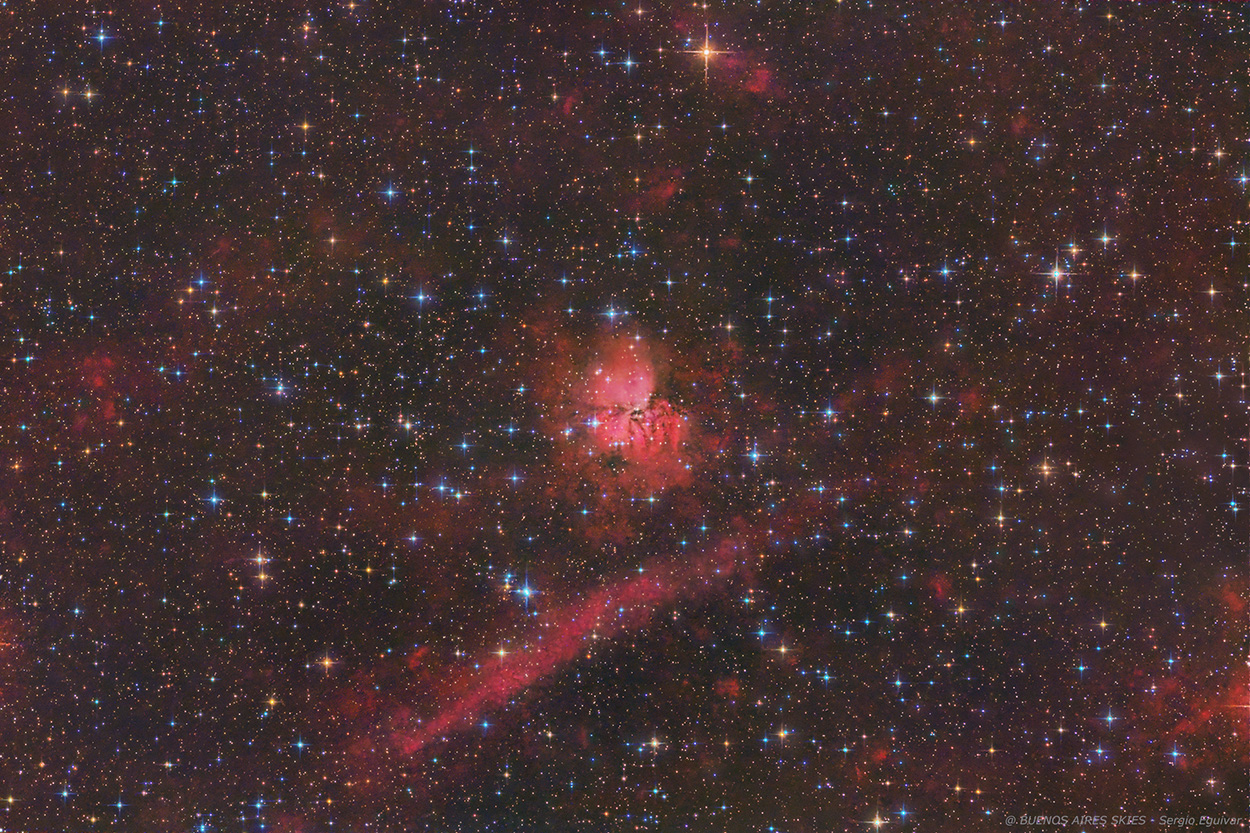
0222222222222222222222222222222222222222222222222222222.
| HOME |
SHARPLESS 2-294 (AKA THE OCTOPUS NEBULA)
EMISSION NEBULA IN MONOCEROS (THE UNICORN)
(Image centered at: ra 07 h: 16 m / dec -09º 25')
CLICK THE IMAGE FOR A HIGH RESOLUTION VIEW
January - 2025, Home Backyard in Martinez, Buenos Aires, Argentina
DATA
TYPE: Emission Nebula
APPARENT DIAMETER: 3.4 arc seconds in diameter
APPARENT MAGNITUDE (V): NA
DISTANCE: 3.2 k to 4.8k parcecs (or 10.000 to 15.000 light years)
IMAGE INFORMATION
INSTRUMENT: 6" ORION OPTICS UK (Ultra Grade Optics) w/Sky Watcher Coma Corrector (0.9x) working at at f4.5
CAMERA: QHY 183 MONO
MOUNT: VIXEN GDPX, OAG with Starlight Xpress Lodestar
FILTERS: BAADER LRGB Set + ANTLIA HA 4nm
SKY CONDITIONS: urban skies - Bortle 8
EXPOSURES: HaRGB (120,60,60,60)
OBJECT DESCRIPTION AND IMAGE SESSION
Sharpless 2-294 is a a HII region ionized by a single B0.5 V star (a main sequence star burning hydrogen). The nebula features several infrared excess sources, a photo dissociation region, and also a group of reddened stars at its border. 36 young stellar object have been identified with an estimated age of ∼4.5 × 106 years. The distance to Sh 2-294 is uncertain and varies from 3.2 kpc to 4.8 kpc.
It is located at 1 degree north from the open cluster NGC 2353 and 3 degress from the Seagull Nebula Complex
This nebula was discovered in 1950 by German astronomer Wolfgang Strohmeier during a photographic survey of the winter Milky Way. He used a Schneider Xenone 1:2 lenses with 125 mm focal length. Of 42 nebulae this one was listed as number 8 (Strohmeier 8) with a size of 4x6 arcminutes. In 1959 the American astronomer Stewart Sharpless published his catalogue of 313 H-II regions discovered on the 48-inch Schmidt telescope photo plates of the «Palomar Observatory Sky Survey». The nebula is listed there as number 294 (S 294, Sh 2-294, Sharpless 2-294) with the description: Bright nebula of irregular form and amorphous structure with a diameter of 7 arcminutes. Because the nebula looks a bit like an upside-down octopus with is arms curled in, it got the nickname «Octopus Nebula».